Introduction To Dill: A Herb With A Rich History
When it comes to herbs that have been used for centuries, dill is definitely one of them. With its delicate and unique flavor, dill has been used for everything from culinary purposes to traditional medicine. Let’s take a closer look at this herb and its rich history.
- Origin and Early Usage: Dill is believed to have originated in the eastern Mediterranean and Western Asia, and been used by civilizations such as the ancient Greeks and Romans. It was used to flavor food and as a medicinal herb for ailments such as indigestion and colic.
- Medieval Period: During the medieval period, dill was used in a variety of ways including in love potions, as a symbol of wealth and as a way to ward off evil spirits. It was also used to flavor wine and as a breath freshener.
- Modern Times: Today, dill is still used for culinary purposes in dishes such as pickles, fish, and soups. Additionally, it is sometimes used as a natural treatment for flatulence, nausea, and other digestive problems. Dill essential oil is also used in aromatherapy to promote relaxation and reduce anxiety.
Overall, dill is an herb that has stood the test of time and has been used for a variety of purposes throughout history. Whether you are adding it to your favorite dish or using it for its medicinal properties, dill is a versatile herb that is definitely worth having in your spice cabinet.
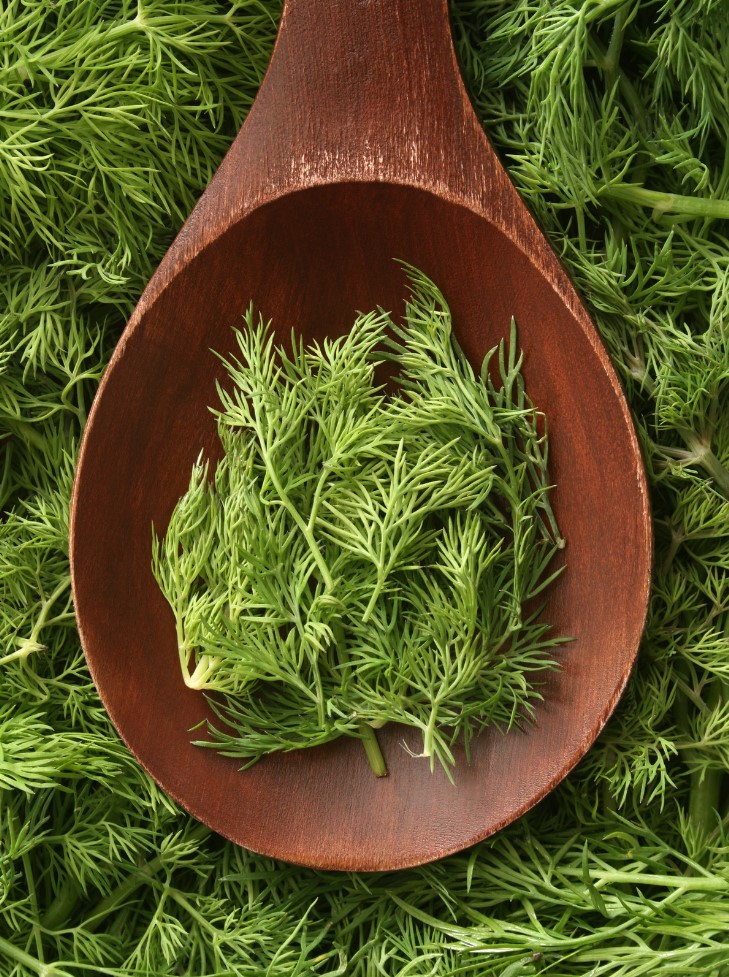
Nutritional Value Of Dill: A Closer Look
Dill is a popular herb known for its distinct flavor and aroma, often used in various dishes ranging from soups to salads, dressings, and sauces. But did you know that dill also packs a nutritional punch? Here’s a closer look at the nutritional value of dill.
- Vitamins and Minerals: Dill is an excellent source of vitamins and minerals, including vitamin C, vitamin A, iron, and calcium. A single 100-gram serving of fresh dill can provide as much as 142% of your daily recommended intake of vitamin C, which helps boost your immune system and promotes healthy skin.
- Antioxidants: Dill contains flavonoids, a group of antioxidants that help protect your body from harmful free radicals. These compounds are beneficial in reducing inflammation and may lower the risk of chronic diseases such as cancer, heart disease, and diabetes.
- Fiber: Fiber is essential in maintaining a healthy digestive system, and dill is a good source of dietary fiber. One serving contains around 2.1 grams of fiber, which can help prevent constipation and promote regular bowel movements.
- Essential Oils: Apart from its nutritional content, dill is also rich in essential oils, such as carvone and limonene. These oils are responsible for the herb’s unique aroma and have been found to have anti-inflammatory and anti-bacterial properties.
Dill’s nutritional benefits make it an excellent addition to the diet, and incorporating it into your recipes can help improve overall health and wellness.
| Nutrient | 100-gram serving |
|---|---|
| Calories | 43 |
| Carbohydrates | 7.8 g |
| Fiber | 2.1 g |
| Protein | 3.5 g |
| Vitamin C | 142% RDI |
| Vitamin A | 32% RDI |
| Calcium | 21% RDI |
| Iron | 48% RDI |
In conclusion, dill is not only a flavorful herb but also a nutrient-rich one that can contribute to overall health and well-being. Its abundant supply of vitamins and minerals, antioxidants, fiber content, and essential oils make it an excellent addition to any diet.
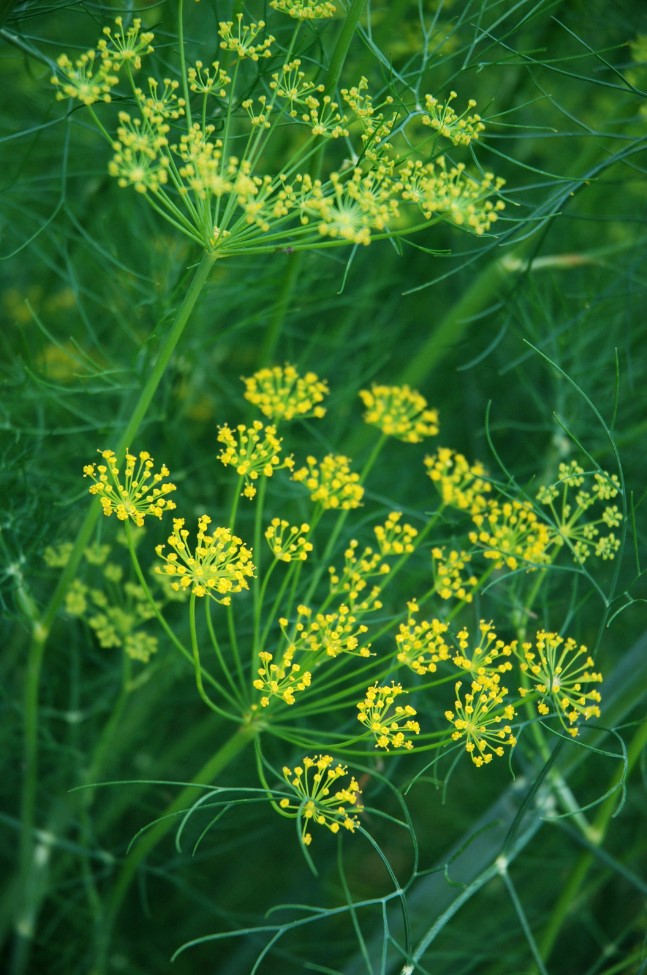
Dill’s Benefits For Digestion And Gut Health
Dill is not only an herb that adds flavor to various dishes, but it also has numerous health benefits. One of its most significant benefits is its positive effect on digestion and gut health. Consuming dill can help with numerous digestive issues such as bloating, constipation, and acid reflux.
The essential oils present in dill seeds have anti-inflammatory benefits and help in relaxing the smooth muscles that line the digestive tract. This property helps reduce bloating and flatulence.
- Dill can also stimulate the production of digestive juices such as bile, which helps break down fats and promote bowel movements. This action, in turn, promotes the overall health of the digestive system by preventing the buildup of toxins and waste products.
- Dill’s anti-inflammatory properties can also help alleviate heartburn, a common condition that affects many people. Heartburn occurs when stomach acid flows back into the esophagus, causing irritation and discomfort. Dill helps in reducing inflammation and easing the symptoms of heartburn.
- In addition to its digestive benefits, dill is also rich in antioxidants and has antimicrobial properties, which help prevent the growth of harmful bacteria in the gut. This property helps promote the healthy growth of beneficial bacteria, which in turn promotes the overall health of the digestive system.
Dill can be consumed in various forms, including fresh or dried leaves, seeds, and essential oils. Consuming dill seeds by steeping them in hot water and drinking as tea is one of the most popular ways to reap the digestive benefits of this herb. Adding dill to your diet by using it in dishes such as soups, stews, salads, and sauces can also help improve digestion.
In conclusion, dill is not only a flavorful herb but also has many health benefits. Its significant benefits on digestion and gut health make it an excellent addition to anyone’s diet. Consuming dill in various forms not only improves the taste of the dishes but also promotes a healthy gut.
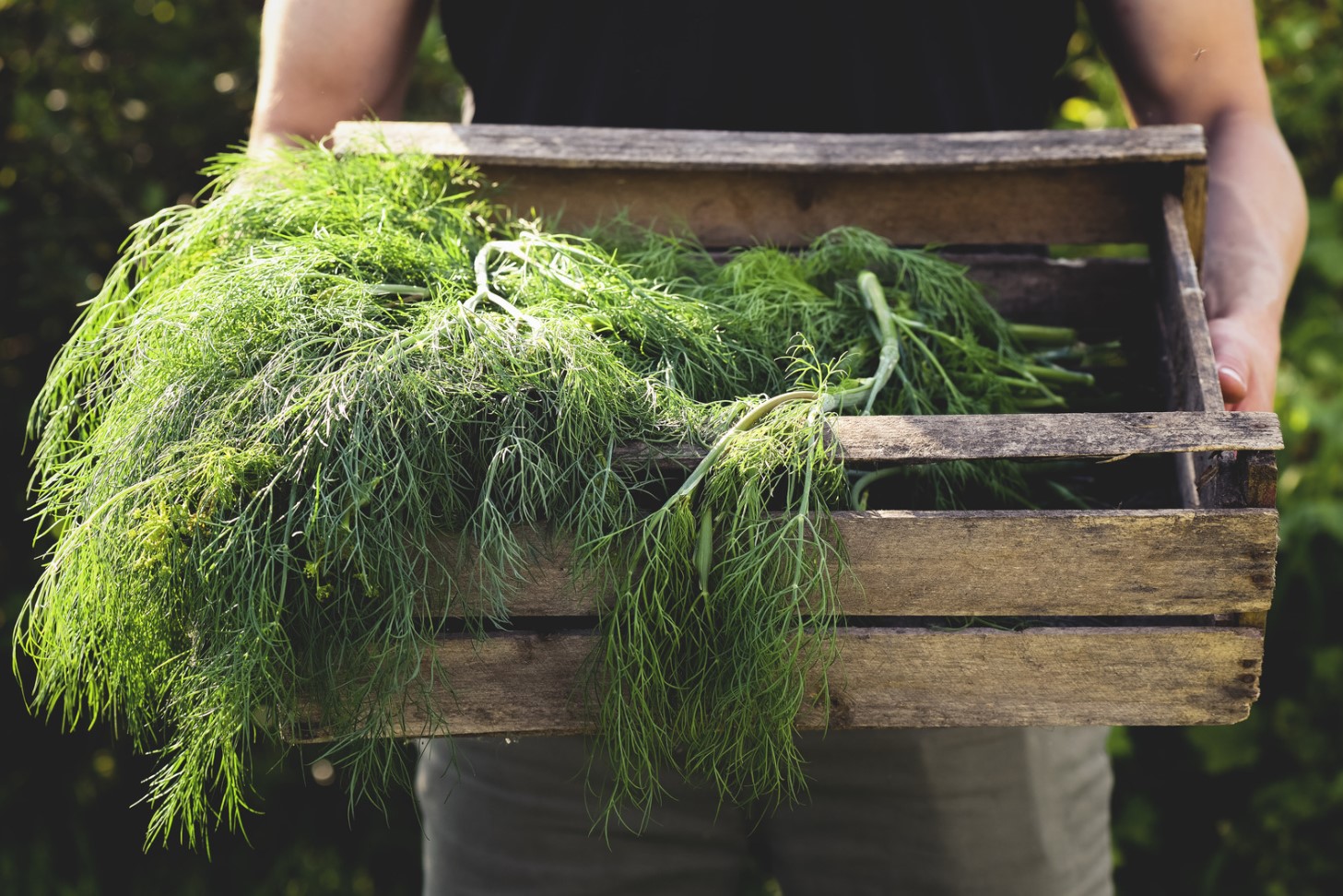
How Dill Can Be Used To Treat Insomnia
Dill is a versatile herb known for its many health benefits. In addition to adding flavor to dishes, it has been used for centuries to treat a variety of ailments. One of the lesser-known benefits of dill is its ability to promote relaxation and help treat insomnia.
Insomnia is a common sleep disorder that affects many people. It can be caused by a variety of factors, including stress, anxiety, and certain medications. While there are medications available to treat insomnia, they often come with unwanted side effects like drowsiness and a risk of addiction. That’s where dill comes in.
- Dill seeds: One of the ways dill can be used to treat insomnia is through the use of dill seeds. These seeds have natural calming properties that can help promote relaxation and improve sleep quality. Simply chewing on a few dill seeds before bed can help ease anxiety and help you fall asleep faster.
- Dill essential oil: Another way to use dill for insomnia is through the use of dill essential oil. This oil can be used in a diffuser or added to a bath to promote relaxation and relieve stress. Additionally, massaging a small amount of dill essential oil onto the temples can help calm the mind and ease anxiety.
When using dill for insomnia, it’s important to use it in moderation and check with a health professional before beginning use. While it’s generally considered safe, some individuals may experience adverse reactions or interactions with other medications.
In conclusion, dill is a powerful herb that can be used for a variety of health purposes. Its ability to promote relaxation and improve sleep quality makes it an effective natural remedy for insomnia. Whether you’re using dill seeds or essential oil, incorporating this herb into your bedtime routine can help you get the restful sleep you deserve.
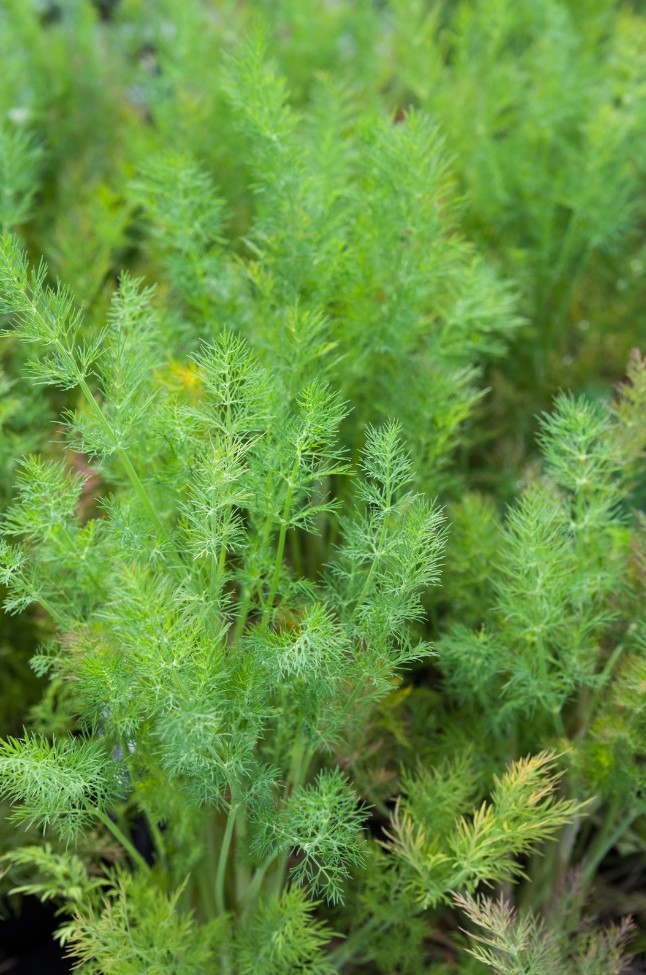
Dill’s Anti-Inflammatory Properties
Dill is a herb that is widely used in the culinary world. Apart from its pleasant flavor and aroma, it also contains many health benefits. One of the most notable benefits is its anti-inflammatory properties.
Studies have shown that dill contains compounds that can act as an anti-inflammatory agent in the body. These compounds help to reduce inflammation in the body by blocking the production of prostaglandins, which are the chemicals that cause inflammation. This makes dill an excellent herb to include in your diet if you suffer from conditions such as arthritis or other inflammatory diseases.
- Dill can be consumed in various forms such as fresh or dried leaves, seeds or essential oil
- It can be used in cooking, pickling, dressing, and other food preparations
- It contains many essential vitamins and minerals such as Vitamin A, C, and Iron
- Dill is also high in fiber which is essential for digestive health
One way to reap the anti-inflammatory benefits of dill is by adding it to your salad dressings or soups. You can also make a tea by steeping dill leaves or seeds in hot water. This not only tastes great but also has a calming effect on your body making it an excellent nighttime drink for people who suffer from insomnia.
| Health Benefits of Dill’s Anti-Inflammatory Properties |
|---|
| Reduces Inflammation in the Body |
| Helps to Fight Arthritis and Other Inflammatory Diseases |
| Has a Calming Effect on the Body |
In conclusion, dill is not just a tasty herb but also has many health benefits. Its anti-inflammatory properties can help to reduce inflammation in the body, fight inflammatory diseases, and have a calming effect on the body. Therefore, it is a great addition to any diet and should be in everyone’s spice cabinet.
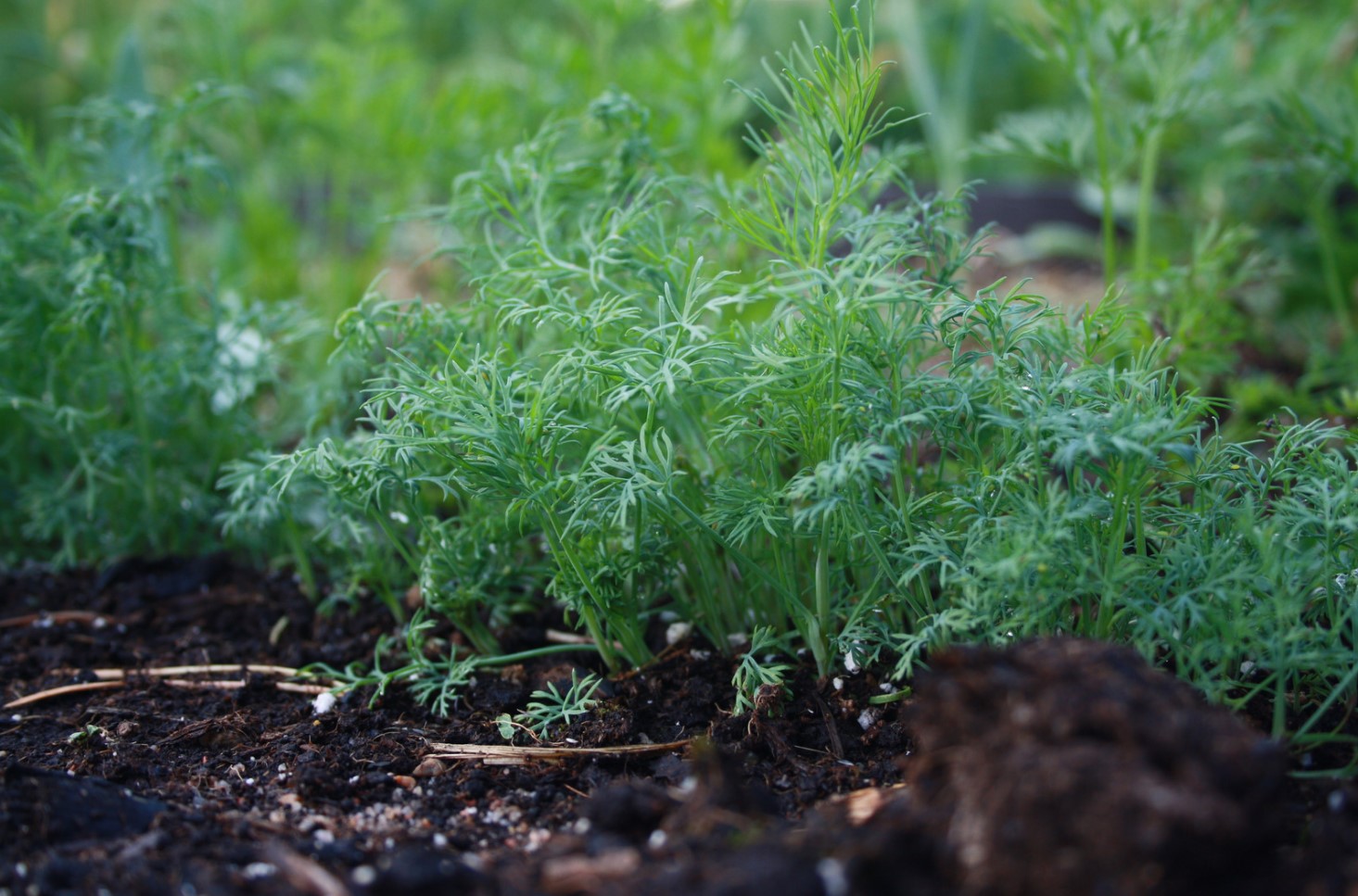
Dill’s Uses İn Traditional Medicine: What Has Been Proven
Dill is a popular herb that has a long history of use in traditional medicine. Throughout the centuries, people have recognized its various health benefits and have used it to treat a wide range of ailments. While some of dill’s uses in traditional medicine have been scientifically proven, others remain anecdotal. In this blog post, we will explore the traditional uses of dill in medicine and what has been scientifically proven to date.
Nausea and Indigestion: One of the most popular traditional uses of dill is for treating nausea and indigestion. Dill has antispasmodic properties that can help ease stomach cramps and bloating. It has been used for centuries to soothe upset stomachs and improve digestion. Studies have confirmed that dill can help reduce the symptoms of indigestion and improve digestion.
- Dill can help reduce bloating and flatulence.
- Dill can help reduce the symptoms of acid reflux.
- Incorporating dill into your diet can help improve digestion.
Menstrual Cramps: Dill has been traditionally used to treat menstrual cramps. Its antispasmodic properties help relax the muscles in the uterus and reduce pain. While there is no scientific evidence to support this use, many women find dill tea or dill supplements helpful in reducing menstrual cramps.
Insomnia: Another traditional use of dill is for treating insomnia. Dill has sedative properties that can help promote relaxation and improve sleep. Studies have confirmed that dill oil can help improve sleep quality and reduce the symptoms of insomnia.
| Dill For Insomnia | Results |
|---|---|
| Dill Oil | Improved sleep quality |
| Dill Tea | Reduced symptoms of insomnia |
Breast Milk Production: Dill has been traditionally used to increase breast milk production in nursing mothers. While there is limited scientific evidence to support this claim, many nursing mothers use dill supplements or incorporate dill into their diets to increase breast milk production.
While some of dill’s traditional uses in medicine have been scientifically proven, others remain anecdotal. It is important to speak with your healthcare provider before using dill for medicinal purposes, especially if you are pregnant, breastfeeding, or taking any medications.
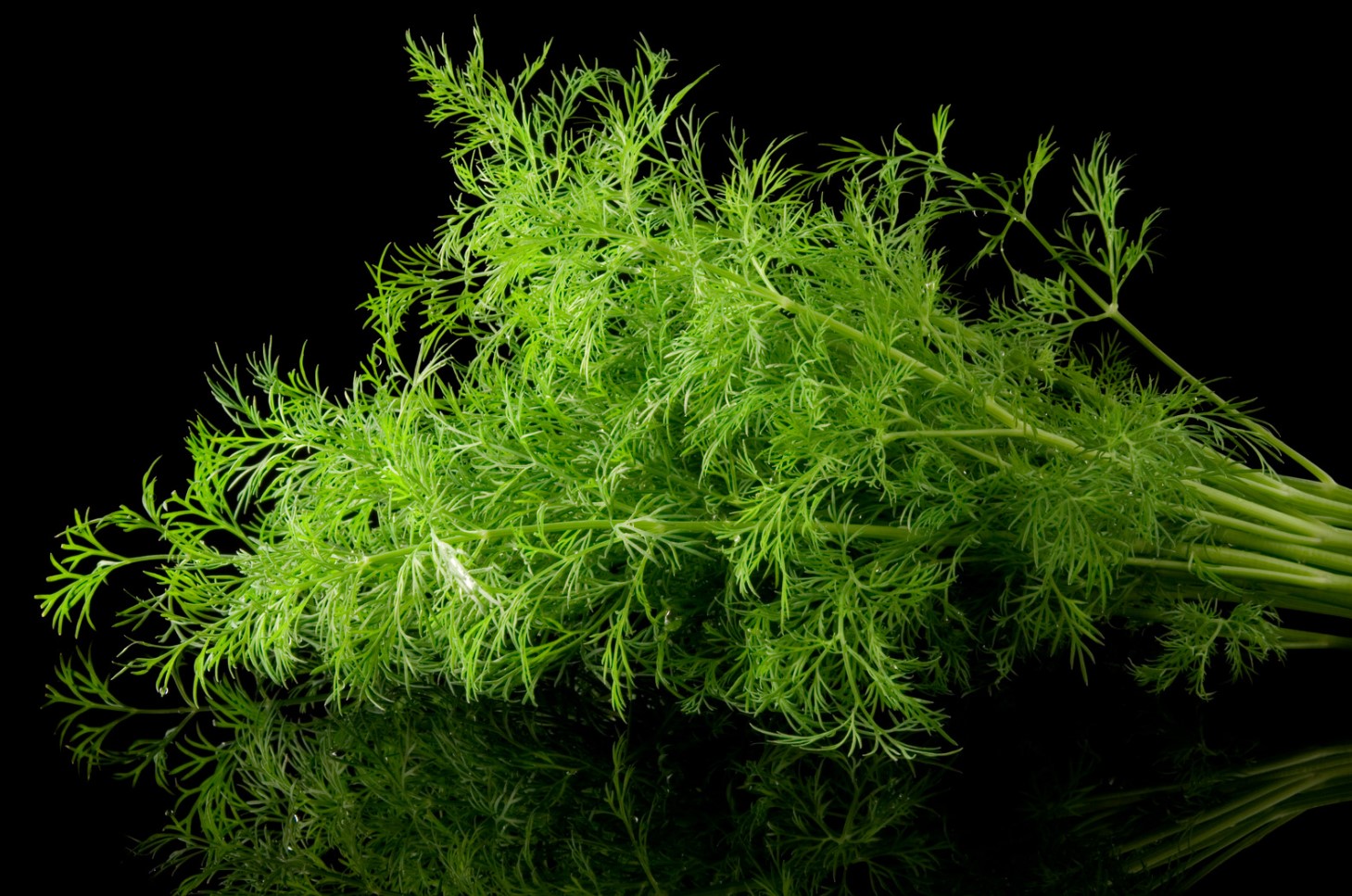
The Many Ways To Cook With Dill: Fresh Vs. Dried
Dill is a versatile Mediterranean herb renowned for its unique flavor and aroma. It belongs to the same family as parsley, celery, and carrot, and has been cultivated since ancient times due to its culinary and medicinal uses. One of the most popular aspects of dill is its ability to enhance the flavor of several cuisines.
When it comes to cooking with dill, you have two options: fresh or dried. Like other herbs, dill has distinct characteristics that depend on its form. Fresh dill is commonly used in dishes that require a mild anise-like flavor, such as salads, dips, fish, and seafood. Fresh dill is best when used within a few days after harvesting and is more perishable when compared to its dried form.
- Fresh dill can be used to flavor vinegar or salad dressing
- Fresh dill can be used to add taste and texture to dips and sauces.
- Fresh dill can be paired with fish and seafood to create a bright, zesty flavor.
Dried dill, on the other hand, has a more concentrated taste and aroma, and is ideal for recipes that require a prolonged simmer or baking, such as soups, stews, and casseroles. The dried form of dill is also more economical and convenient, as it can be stored for up to six months.
- Dried dill is perfect for seasoning dry rubs and spice blends.
- Dried dill complements mayonnaise-based salads, such as potato or egg salad.
- Dried dill can be added to marinades and rubs for roasted vegetables like cauliflower, zucchini and eggplants.
Regardless of whether you choose fresh or dried dill, incorporating this herb into your cooking can help enhance the flavor and nutrients of your dishes. It has also been proven to have health benefits and can provide relief from conditions such as poor digestion, insomnia, and inflammation.
In conclusion, using dill in your cooking can add flavors that will elevate your culinary skills to a whole new level. Experiment with the many different uses of fresh and dried dill, and you will surely find combinations to suit your unique palette.
| Quick Tips: |
|---|
| Pick the freshest dill, it should have firm stems and bright green leaves. |
| Store fresh dill in a plastic bag and keep it in the refrigerator for up to 5 days. |
| Always measure the dried dill carefully. |
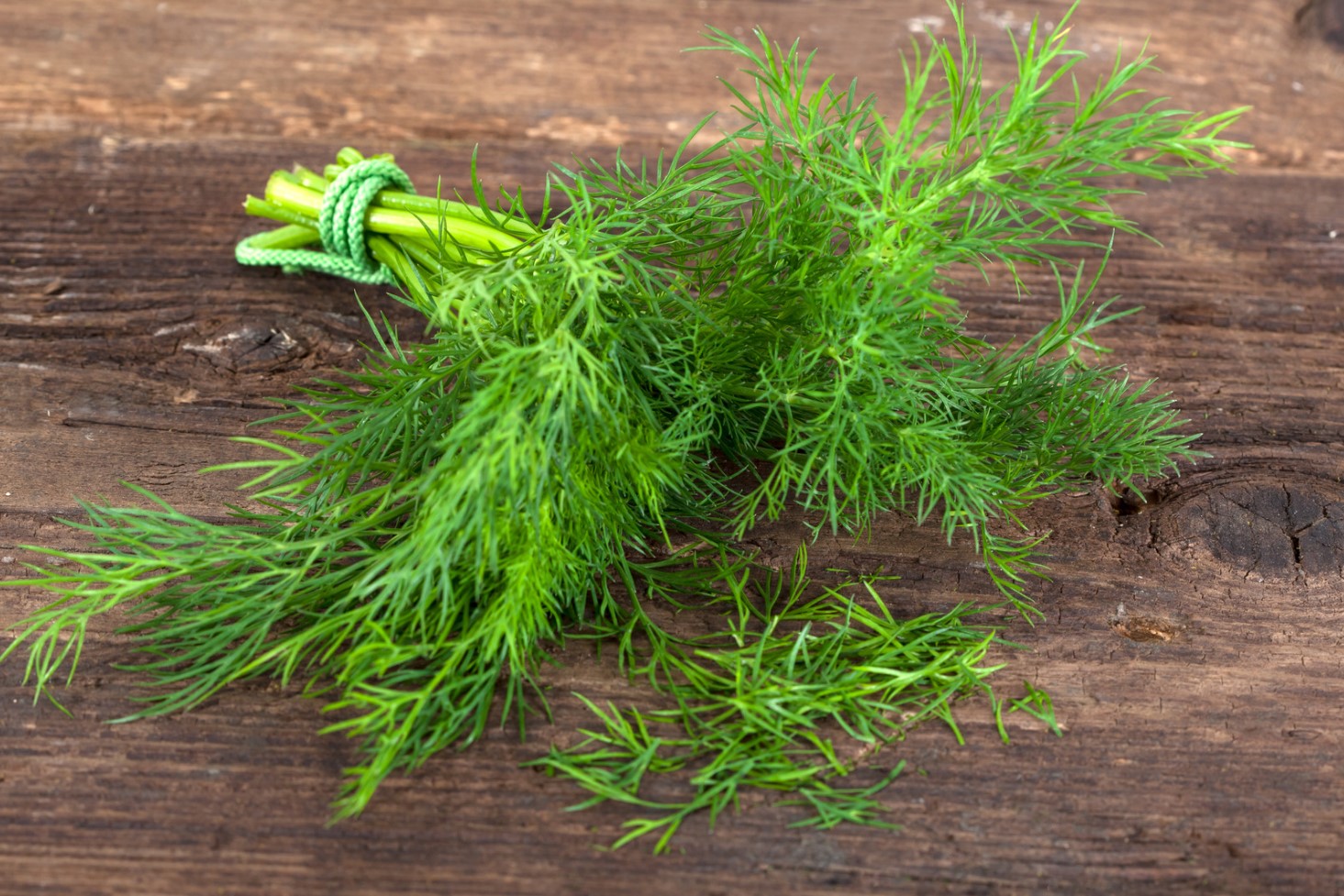
Pickling With Dill: A Classic Technique
Pickling is one of the oldest food preservation techniques known to mankind. A popular ingredient in pickling is dill, a herb that has been used for thousands of years not only for its flavor but also for its various health benefits. In this blog post, we will take a closer look at pickling with dill, a classic technique that has been passed down from generation to generation.
If you’re new to pickling, it’s a method of preserving food by immersing it in a mixture of vinegar, water, salt and spices. The acid in the vinegar inhibits the growth of bacteria, giving the food a longer shelf life.
Dill is a popular herb used in pickling due to its unique flavor profile. The herb has a sweet and slightly bitter taste and is commonly used to flavor pickles, sauerkraut and other preserved foods. Dill is also known for its digestive benefits and ability to soothe upset stomachs.
- One classic pickle recipe that uses dill is the dill pickle. To make this, you will need cucumbers, dill, garlic, vinegar, water, sugar, and salt. Simply slice the cucumbers and place them in jars with the dill and garlic. In a saucepan, combine the vinegar, water, sugar, and salt and boil until the sugar and salt dissolve. Pour this mixture into the jars with the cucumbers and seal tightly. Let the jars sit for at least 24 hours before refrigerating.
- Another recipe is pickled beets with dill. You will need beets, sugar, vinegar, salt, and dill to make this. Peel and slice the beets and place them in jars with the dill. In a saucepan, combine the sugar, vinegar and salt and bring to a boil. Pour this mixture into the jars and seal tightly. Let the jars sit for at least 24 hours before refrigerating.
Pickling with dill is a classic technique that not only adds flavor to your food but also extends its shelf life. Whether you are new to pickling or have been doing it for years, using dill in your recipes is a great way to add a unique flavor and reap its many health benefits. So next time you’re looking to preserve your favorite foods, consider pickling with dill!
How To Use Dill İn Salads, Dressings And Sauces
Dill is an aromatic herb that adds a distinct flavor and fragrance to foods. It’s a staple ingredient in many traditional dishes and comes with a myriad of health benefits. One of the best ways to use dill is in salads, dressings, and sauces. Thanks to its tangy, slightly sweet flavor, dill can take your simple salad to the next level, giving it that extra boost of flavor and freshness. Here’s how you can use dill in salads, dressings, and sauces.
- For Salads: One of the easiest ways to use dill in salads is to toss in some fresh, chopped leaves, along with other greens and vegetables of your choice. You can also mix the dill with creamy yogurt, sour cream, or mayo, to make a delicious dressing. Here’s a simple, yet tasty Greek salad recipe that uses dill:
Ingredients: Instructions: 1-2 cups chopped greens (romaine or spinach) 1. Wash and chop the greens. 1 medium sized cucumber, sliced 2. Add the cucumber to the bowl. 1-2 medium sized tomatoes, sliced 3. Add the tomatoes to the bowl. 1/4 cup chopped red onion 4. Add the chopped red onion. 1/2 cup crumbled feta cheese 5. Mix together the dressing ingredients in another bowl: 1/4 cup olive oil, 2 tablespoons lemon juice, 2 tablespoons chopped fresh dill, 1 crushed garlic clove, 1/4 teaspoon salt, 1/8 teaspoon black pepper. 1/4 cup pitted kalamata olives 6. Pour the dressing over the salad and mix well. 1-2 tablespoons chopped fresh dill - For Dressings: Dill makes an excellent addition to creamy dressings like ranch or tzatziki. Here’s a quick and easy recipe for tzatziki sauce:
- 1 cup plain Greek yogurt
- 1/2 cup grated cucumber
- 2 tablespoons chopped fresh dill
- 1 crushed garlic clove
- 1 tablespoon lemon juice
- Salt and pepper, to taste
- For Sauces: Dill can be used to make a flavorful sauce for fish or chicken dishes. Here’s an easy recipe for dill sauce:
- 1 cup sour cream
- 2 tablespoons chopped fresh dill
- 1 tablespoon chopped fresh parsley
- 1 crushed garlic clove
- 1 teaspoon lemon juice
- 1/4 teaspoon salt
In conclusion, dill is a versatile herb that can be used in many different ways. Adding dill to salads, dressings, and sauces can enhance the flavor and provide a range of health benefits. Whether you prefer fresh or dried dill, there are countless ways to experiment and discover new flavor combinations. So, why not try incorporating dill into your next meal?
Dill As A Staple İn Scandinavian Cuisine: A Deep Connection
Scandinavian cuisine is known for its simplicity and use of fresh, natural ingredients. One herb that is a staple in this cuisine and holds a deep cultural connection is dill. Dill is a delicate herb that adds a subtle anise-like flavor to dishes. It is mainly used with fish and seafood but is versatile enough to be added to various dishes.
- History of dill in Scandinavia
- The use of dill in traditional Scandinavian dishes
- How to incorporate dill into your cooking
The Vikings were known to use dill medicinally and added it to their food for flavor. Its popularity grew in Scandinavia during the Middle Ages and has since remained a staple herb in their cuisine.
Dill gravlax is a classic Scandinavian dish that consists of salmon cured with dill, salt, and sugar. Other popular dishes include dillkött (dill meatballs), dillsmörgås (dill sandwiches), and dillstuvad potatis (dill creamed potatoes).
| Dill Recipe | Ingredients |
|---|---|
| Dilled New Potatoes | 1 pound small new potatoes, 1/4 cup butter, 1/4 cup chopped fresh dill |
| Dill Sauce | 1/2 cup mayonnaise, 1/2 cup sour cream, 1/4 cup chopped fresh dill, 1 tablespoon lemon juice |
To incorporate dill into your everyday cooking, try adding it to scrambled eggs, roasted vegetables, or in a dressing for your favorite salad. Dill also pairs well with lemon, cucumber, and yogurt.
Overall, dill is not only a delicious herb but also holds cultural significance in Scandinavian cuisine. Its subtle taste and versatility make it a great addition to any dish.
Dill’s Use İn Russian, Middle Eastern, And Indian Cuisine
Dill is an herb that has been used in various cuisines around the world. Not only is it versatile in terms of its culinary uses, but it also boasts numerous health benefits. Its unique flavor and aroma have made it a favorite ingredient in dishes from Russia, the Middle East, and India.
In Russia, dill is an essential herb. It is commonly served with fish dishes, pickled vegetables, and soups. One popular Russian dish that uses dill is okroshka, a cold soup made with kefir or sour cream, chopped vegetables, and boiled eggs. Dill is added at the end of the cooking process to impart a fresh, herbal flavor.
In Middle Eastern cuisine, dill is used in a variety of ways. It is often paired with yogurt or labneh to make dips or used as a garnish for salads and sandwiches. In Iran, dill is used to flavor rice dishes such as sabzi polow, which is made with saffron rice, herbs, and either chicken or lamb. In Lebanon, dill is used to make shawarma, a popular street food made with marinated meat that is roasted on a spit.
Indian cuisine also makes use of dill. In Bengal, a region in eastern India, dill is used to make a vegetarian dish called shukto. This dish contains an assortment of vegetables and is flavored with a unique blend of spices, including dill. In southern India, dill is used to make a coconut-based sauce called thengai aracha kuzhambu, which is served with rice.
| Dill’s Culinary Uses In Different Cultures | |
|---|---|
| Russia | Fish dishes, pickled vegetables, soups, okroshka |
| Middle East | Yogurt dips, salads, sandwiches, shawarma, rice dishes |
| India | Shukto, thengai aracha kuzhambu, other vegetable dishes |
Dill’s unique flavor and versatility have made it a beloved ingredient in many cultures around the world. Its use in Russian, Middle Eastern, and Indian cuisine showcase its adaptability and ability to enhance various dishes. Incorporating dill into your cooking not only adds a burst of flavor but also provides numerous health benefits.
Dill’s Use İn Essential Oils: Benefits And Safety Tips
Dill, also known as Anethum graveolens, is not only a popular herb but also a versatile essential oil. Dill essential oil is derived from the steam distillation of the plant’s seeds, which have a pungent aroma and a warm, sweet taste. Dill oil is used in traditional medicine and aromatherapy to treat a variety of ailments due to its many therapeutic benefits. In this blog post, we will explore the benefits and safety tips of using dill essential oil.
- Dill Essential Oil’s Benefits:
- Dill essential oil has antispasmodic properties that can help relieve muscle cramps and spasms.
- It can be used as a natural diuretic to help increase urine output and promote detoxification.
- Dill oil has sedative properties that can help promote relaxation and alleviate stress and anxiety.
- It contains anti-inflammatory compounds that can help reduce swelling and pain associated with arthritis and other inflammatory conditions.
- Dill essential oil has antimicrobial properties that can help eliminate harmful bacteria and fungi, making it a great addition to your cleaning products.
- Safety Tips When Using Dill Essential Oil:
- It is important to dilute dill essential oil before applying it topically to avoid skin irritation or allergic reactions.
- Pregnant women should avoid using dill oil as it can stimulate menstrual flow and potentially cause complications during pregnancy.
- Dill essential oil should not be ingested as it can be toxic in large doses, and may cause digestive or respiratory issues.
- Always consult with a healthcare professional before using dill essential oil, particularly if you have a medical condition or are taking prescription medication.
Overall, dill essential oil has a variety of benefits and can be a valuable addition to your natural health arsenal. As with any essential oil, it is critical to use it safely and responsibly to ensure you reap its many benefits without experiencing negative side effects.
Dill’s Cultural Significance İn Folklore And Mythology
Dill is not just an herb that you can add to your meals; it carries immense cultural significance in folklore and mythology. In ancient Greece, dill was associated with wealth and prosperity. The Greeks believed that dill could protect them from witchcraft, and they used it in many spiritual rituals.
Similarly, in the Middle Ages, dill was believed to be a protector against witchcraft and evil spirits. It was hung over doors and windows to keep out negative energies. In addition, in some cultures, pregnant women would eat dill seeds to ease childbirth, and nursing mothers would consume dill to increase milk production.
- Dill can also be found in Norse mythology, where it is associated with the goddess Freya. Freya is the goddess of love, sexuality, and fertility, and it is said that she used dill to enhance her erotic powers.
- In Slavic folklore, it is believed that dill would protect people from the evil eye.
In addition to its protective qualities, dill has been used as a symbol of endurance, as it can survive in a variety of harsh growing conditions. Dill is also associated with vitality and new beginnings. Ancient Romans used it as a symbol of new life and would place it in the mouths of newborn babies. Traditionally, dill was also used to create wreaths and garlands, symbolizing the cycle of life and the seasons.
| Region | Belief/Tradition |
| Greece | Dill is a protector against witchcraft and is used in spiritual rituals |
| Middle Ages Europe | Dill keeps away evil spirits and the evil eye |
| Norse mythology | Dill is associated with the goddess Freya and her erotic powers |
| Slavic folklore | Dill protects against the evil eye |
| Ancient Rome | Dill is a symbol of new life and placed in the mouths of newborn babies |
In conclusion, dill has a rich cultural history and is associated with various beliefs and traditions. From protecting against witchcraft to symbolizing new beginnings, dill has been a symbol of vitality and endurance throughout history. So, the next time you add dill to your meal or use it in a herbal remedy, remember its cultural significance and the beliefs it has been associated with for centuries.
Gardening With Dill: Tips For Growing And Harvesting
Dill, a herb with a rich history, is widely used in various cuisines and traditional medicines for its numerous health benefits. It has a unique flavor that enhances the taste of food, making it a popular ingredient in many dishes. If you’re interested in having a fresh supply of dill available, then growing it in your garden is a great idea. In this article, we will share some tips on how to grow dill and harvest it.
-
- Location and Soil
Dill is easy to grow and prefers a sunny location, although it can tolerate some shade. It grows best in well-draining soil that’s slightly acidic with a pH of 6-7. You can add some organic matter to the soil to enrich it and promote healthy growth.
-
- Planting Dill
You can either start growing dill from seeds or seedlings. If you’re planting from seeds, sow them directly into the soil in early spring, about 1/4 inch deep and 12-18 inches apart. If you opt for seedlings, plant them as soon as the weather permits, taking care not to damage their roots.
-
- Watering and Fertilizing
Water your dill regularly, making sure the soil remains moist but not waterlogged. Dill doesn’t require much fertilizer since it doesn’t like being over-fertilized. You can add some all-purpose fertilizer to the soil before planting or half-way through its growth cycle, but be sure not to overdo it.
-
- Harvesting Dill
Harvesting your dill leaves is simple. Once the plant reaches a height of 10-12 inches, wait for it to flower, and then start harvesting the leaves to use in your cooking or to make dried dill. You can cut off the entire stem or only the parts with leaves. Dill leaves have the most flavor before the plant flowers, so it’s best to harvest before that happens.
Finally, it’s important to note that dill self-sows, which means that it will drop its own seeds that can grow into new plants. Keep this in mind when harvesting your dill so that you don’t accidentally remove the seeds. With these easy tips, you’re well on your way to growing and harvesting fresh dill in your garden.
Conclusion: Why Dill Should Be İn Your Spice Cabinet.
If you’re looking to add a flavorful and versatile herb to your spice cabinet, look no further than dill. This fragrant herb has a rich history, nutritional benefits, and several culinary and medicinal uses that make it a must-have in any kitchen. After exploring the many ways to use dill, it’s clear that this herb should be a staple in every spice cabinet.
Dill is a herb that has been used for centuries in various cultures around the world. In ancient Greece, it was believed to have medicinal properties that could ease digestive issues, while the ancient Romans used it as a perfume. Today, it’s commonly used in pickling and in dishes from a variety of cuisines, including Russian, Middle Eastern, and Indian. This deep connection to traditions and cultures around the world adds to the cultural significance of dill.
- Dill is also incredibly nutritious, containing vitamins and minerals like vitamin C, iron, and calcium.
- Dill has many benefits for digestion and gut health. It contains compounds that can help soothe the stomach and reduce gas and bloating.
- In addition to its culinary uses, dill has been used in traditional medicine for centuries. It has been proven to have anti-inflammatory properties and can be used to treat insomnia.
- Dill is incredibly versatile in the kitchen, with both fresh and dried forms being used in various dishes. It adds a bright, citrusy flavor to salads, dressings, and sauces, and pairs well with fish and eggs.
If you’re interested in pickling, dill is a classic choice for adding flavor and preserving produce. Simply add a sprig of fresh dill to your pickling brine for a flavorful and traditional pickle.
Growing and harvesting dill is easy, making it a great herb to grow in your garden. It prefers full sun and well-draining soil and can be harvested when the plant is about 8 inches tall. Use the leaves and flowers in your cooking or drying them for later use.
Overall, the many uses and benefits of dill make it a valuable addition to any spice cabinet. Whether you’re interested in its culinary or medicinal properties, dill is a versatile herb that can be used in many different ways. So why not give it a try and see how it can enhance your cooking and health?